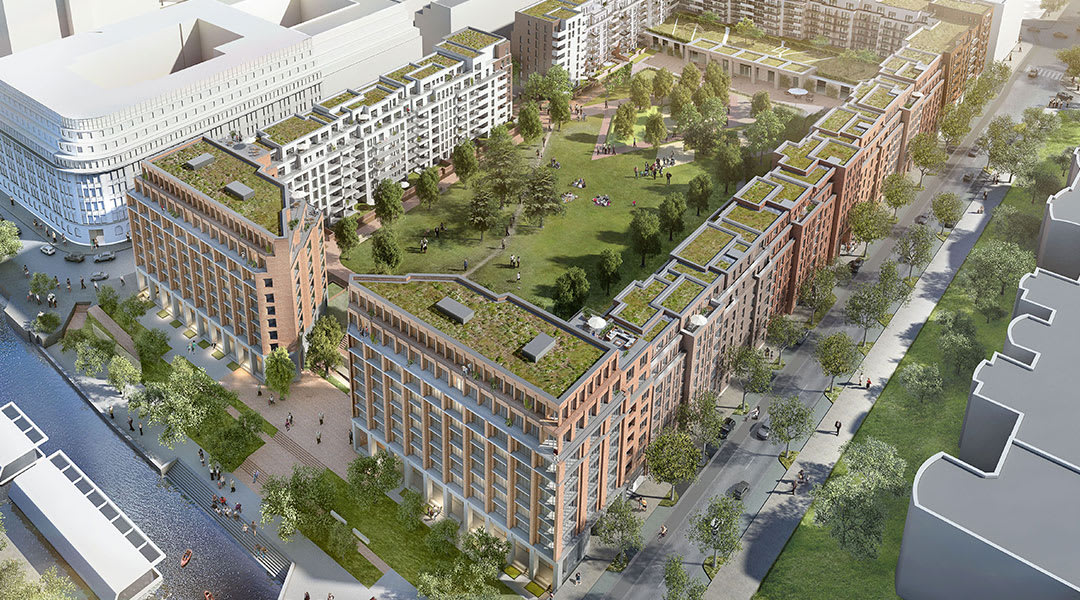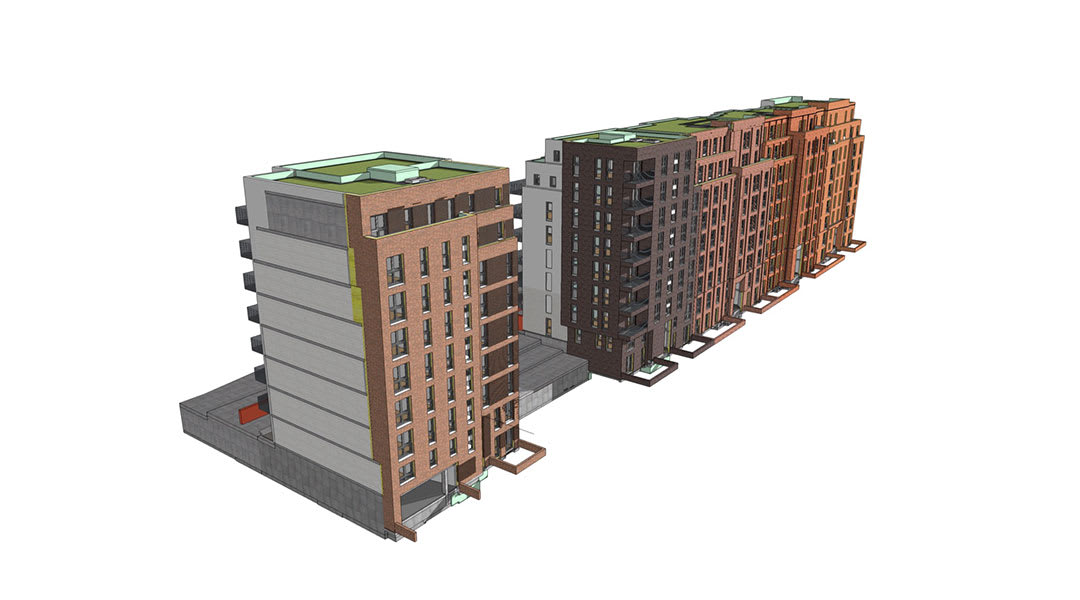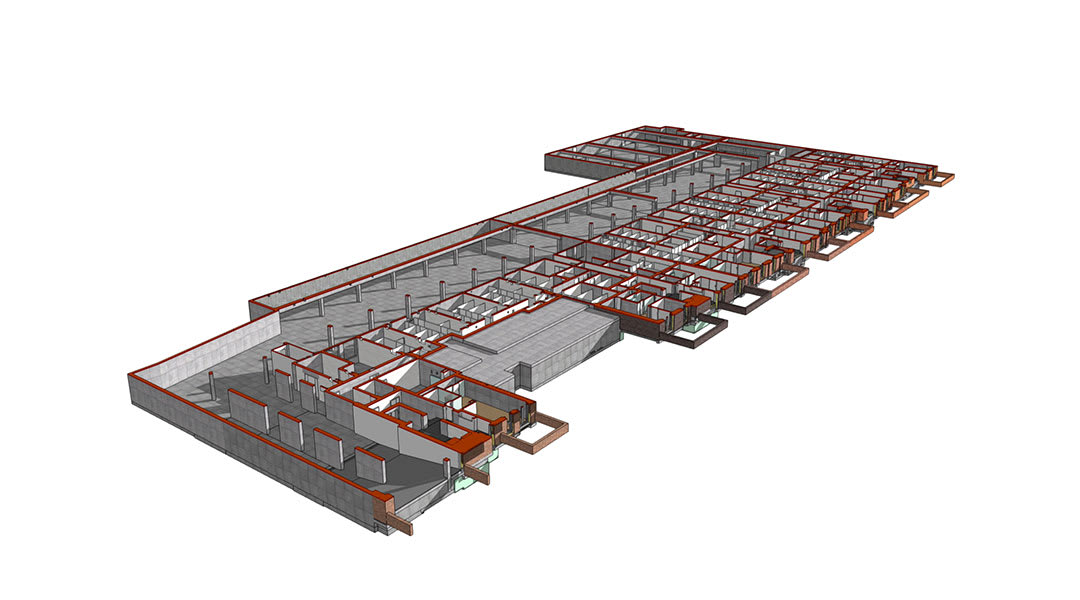
The SonninPark housing units surround a 17,000 sq. meter landscaped courtyard that’s filled with trails, parks, and greenery. Pedestrians can access the park through two sizable entryways that blur the barrier between urbanism and nature.The units stand nine stories tall and include underground parking.
For both KBNK and Aug. Prien, the project would mark their first encounters with Open BIM workflows.
In today’s changing market, those who do not adapt to the new method will have difficulties acquiring new projects.Frank Birwe, Managing Director.
BIM for the Planning Phase
KBNK Architects began planning the SonninPark as early as 2014 —they were responsible for 12 of the 9-story buildings, which house 340 apartments with a gross floor area of 30,100 square meters.
KBNK drafted the first few buildings in 2D—but Aug. Prien called for3D models and aBIM planning method, desiring a pilot project for BIM implementation with a firm they trusted.It was the perfect opportunity for KBNK, even if they weren’t yet experienced with BIM.
“We had to decide —either we dare and try it together or we keep the well-known old method without any possibility of gaining knowledge,” said Eduard Lepp, the architect responsible for BIM at KBNK.

At the onset, Lepp explains that KBNK had a lot of learning to do. They carried out the test phase in Vectorworks, familiarizing themselves with the software’s capabilities. Through this, Lepp made a plan for where to optimize their BIM use.
KBNK was tasked with creating the client’s project file and all necessary resources. Lepp says KBNK, together with Aug. Prien, set the rhythm for model exchanges with the planning partners.
Open BIM with Vectorworks
Open BIM involves an open exchange of information and models with project stakeholders. For the SonninPark project, KBNK handled the exchange process by sharing their models using IFC version 2x3.
“We used Saved Views in Vectorworks to share our models,”said Lepp, “which allowed us to save the visibility of the construction layers and classes and call them up when needed. In this way, we ensured a consistent representation and a consistent quality in export.”
With models from all the project partners, Lepp explains that the next step was to load each model into an empty file for a first content inspection. After that, they referenced the file to the master BIM file to visually check for collisions. Discrepancies were discussed, logged, and distributed to the team as BCF files.
Because IFC is a universal language for BIM exchange, KBNK was able to use standard objects and data and avoid time-consuming exchange tests with custom psets. They used Solibri to review the building and ensure a collision-free model, which would translate to a more efficient and less costly process at the construction site.
BIM has the potential to make all those involved in construction become partners, thus incorporating more knowledge into the overall planning.Frank Birwe, Managing Director.
BIM: Not Just for Architects
For architects, BIM proves to be a real competitive advantage in winning new contracts.
"In today’s changing market, those who do not adapt to the new method will have difficulties acquiring new projects,” explains KBNK managing director Frank Birwe. “We rely on BIM because we know that we have to position ourselves well now, so that in 5 or 10 years, we’ll actually be ahead instead of lagging behind.”

The architects at KBNK agree that BIM is one of the most important developments, if not the most important development, for the coming years of architecture. “BIM has the potential to make all those involved in construction become partners, thus incorporating more knowledge into the overall planning,” Birwe said.“This is why KBNK Architects decided to use BIM in the SonninPark.”
BIM remains a huge advantage for architects. But the benefits for construction clients are potentially more substantial —when you consider that construction makes up only 20 percent of total building cost while subsequent operations make up 80 percent, a living digital information model quickly becomes necessity.
Stay in the know with the latest insights
Subscribers receive news, customer stories, success and learning tips, event information, and other important announcements form Vectorworks.
By submitting this form, you agree that Vectorworks, Inc. and its authorized partners may contact you in regards to news, offers, and the use of our software, services, and platforms. Learn more about our privacy practices and your data on our privacy page.*